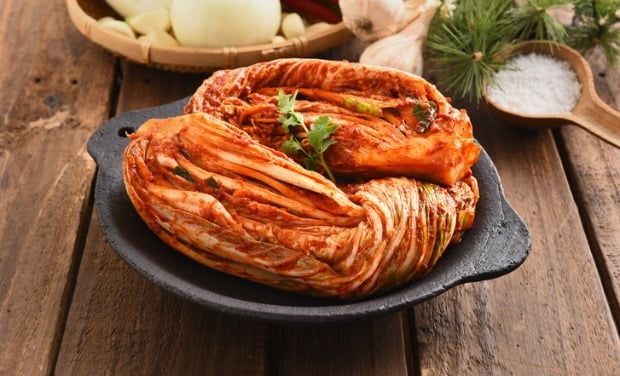
Photo = Getty Images
With the release of the so-called’naked cabbage’ video of pickling cabbage with the body, anxiety about Chinese kimchi is spreading. The Ministry of Food and Drug Safety and others are explaining that the video is in the past and has nothing to do with imported kimchi, but consumers do not believe it and are a sign of boycotting.
Some are predicting that the demand for Chinese kimchi will decrease due to the naked cabbage incident, but there are opinions that imports of Chinese kimchi will continue to increase based on the increase in imports even during the parasite wave earlier.
Chinese kimchi dominated the Korean table
According to the Korea Agricultural and Fishery Food Distribution Corporation (aT) on the 22nd, last year’s kimchi import amounted to $152.42 million. It was an increase of 16.4% compared to the last year of $130.91 million in 2019. The amount of imports decreased slightly due to the poor restaurant business due to Corona 19, but the agri-food industry reports that the amount has increased sharply due to the increase in the price of Chinese kimchi. This year, imports are also rebounding again. Imports from January to February were 42,692 tons, an increase of about 10% compared to the previous year.
Chinese kimchi is rarely consumed in ordinary households. At home, most people make kimchi or buy domestic kimchi. Chinese products are usually used in restaurants. Because it is more than half cheaper than domestic, kimchi is used in large quantities, and Chinese-made is the place where cost reduction is important.
It was in 2003 that Chinese kimchi began to be imported largely into Korea. Until then, most of the methods were imported in the form of pickled cabbage or Chinese cabbage and manufactured in Korea, but from that time on, it was converted to the form of imported finished products. Kimchi imports from about 70,000 tons in 2004 increased more than four times, exceeding 300,000 tons in 2019 for the first time.
Income increases even in the case of parasites
After importing Chinese kimchi, he was caught in various incidents. The most notable is the parasite and heavy metals outbreak in 2005.
Parasite kimchi is a case in which the sale of the kimchi product in question was banned as parasites such as roundworms were identified in 9 out of 16 kimchi products made in China at the time. This raised the quality problem of Chinese kimchi.
In the same year, a survey in Seoul revealed that more than three times more heavy metals were found in Chinese kimchi than domestic kimchi, and anxiety was further amplified.
However, even at this time, the increase in imports of Chinese kimchi remained solid. According to the Korea Rural Economic Institute, kimchi imports increased from 70,000 tons in 2004 to 110,000 tons in 2005, 170,000 tons in 2006, and 220,000 tons in 2007. In 2005, when the kimchi fluctuation occurred, imports increased by 55.5% compared to 2004.
Although consumers’ anxiety about their health has increased, it is interpreted that it is not a big problem in the face of a significantly lower price compared to domestic products.
Country of origin labeling system that prevented the import of kimchi from China
There was also a time when the import of kimchi made in China fell sharply. It was in 2009. From December 2008, a system was applied in which the country of origin of kimchi provided by restaurants must be indicated. Until now, even if there was a parasite wave, it was difficult to know whether the kimchi provided by the restaurant was made in China, but from this point on, consumers have been reliably aware of the country of origin and consume it.
Imports plummeted in 2009 as consumers showed resistance to Chinese kimchi. Imports decreased by 33.3% from 222,000 tons in the previous year to 148,100 tons.

A video about the process of making kimchi in China, which is said to have been released for the first time in Weibo, China in June of last year. /Source = YouTube Channel 3.14
Some experts believe that this situation of naked cabbage is similar to the situation at the time of the introduction of the country of origin labeling system. This is because consumers are showing strong reluctance to eat kimchi from China, and the movement to refrain from eating kimchi is in earnest. In this case, it is expected that the import volume of kimchi this year will drop sharply compared to the previous year and the demand for domestic kimchi may increase. The fact that consumers’ interest in food safety is higher than in the past is also mentioned as a reason for expecting a decline in demand for kimchi made in China.
The dissenting opinion is also difficult. It is an analysis that the fundamental demand will not decrease. In 2009, imports of kimchi from China were’restored’ from the following year. It imported 190,000 tons in 2010 and 230,000 tons in 2011, which quickly recovered the existing imports. This is the reason why consumption is expected to recover within a few months due to price factors even if consumers such as naked cabbages refused Chinese kimchi and temporarily reduced their imports.
In addition, the sharp drop in imports in 2009 was a result of a combination of various factors, such as a surge in exchange rates due to the global financial crisis and the decline in domestic kimchi due to a strong Chinese cabbage crop, which was interpreted as supporting this prediction to be.
Reporter Kang Jin-kyu [email protected]
